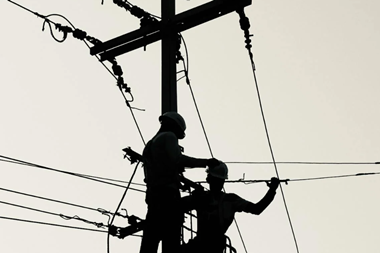Road congestion and the establishment of a European transport network may make toll roads more commonplace. Paul Strohm reports
For most people in the UK, toll roads are a novelty experienced while driving through
continental Europe, notably France. But, as more and more people travel through the UK's West Midlands region and experience the M6 Toll - formerly known as ‘Birmingham Northern Relief Road' - they are perhaps getting a glimpse of the road system of the future in this country. There are already plans to use the model elsewhere.
The UK has approximately 2,143 miles of motorway network. However, tolls are currently only levied over this 27-mile portion of the M6, the M6 Toll, as well as a few bridges such as the Second Severn Crossing linking Wales and the Bristol area and the Forth Road Bridge linking Edinburgh with the north of Scotland.
Although the UK public has not much stomach for toll roads at home, current levels of congestion are not appreciated either and there is a growing realisation that something has to be done.
The M6 Toll, which opened in 2003, bypasses the heavily congested un-tolled motorways that run around and through the City of Birmingham by skirting the northern fringe of the city. The road is operated by Midland Expressway, a company that is wholly owned by Macquarie Infrastructure Group, which has the licence to operate it until 2054.
From April to June of this year this short stretch of road took an average of £168,479 - up more than 19% on the same period in 2006 - and during workdays was used by 53,658 vehicles per day
France has Europe's most extensive toll road network, totalling approximately 7,583km (4,711 miles). Most motorways in France are tolled and operated by three companies that the French government privatised recently, raising €14.8bn. These include Autoroutes du Sud de la France (ASF), Société des Autoroutes du Nord et de l'Est de la France (SANEF) and Autoroutes Paris-Rhin-Rhône (APRR) in which Macquarie Infrastructure Group has a 20% stake.
Autoroutes Paris-Rhin-Rhône (APRR) reported revenues of €864m for the first half of 2007, an 8.5% improvement on the same period in the previous year. The growth was attributed to increasing volumes of traffic, notably heavy goods vehicles - a total of 9,846 million kilometres were travelled on APRR's portion of France's autoroute network.
But tariffs are reviewed annually too. In the APRR area the French government put them up by an average of 0.92% on 1 October 2007, for instance.
Macquarie Infrastructure Group also has stakes in toll routes in Canada, Australia, the USA, Germany and Portugal. Floated in 1996, the company has achieved compound growth of 17.8% and by June 2007 had a market capitalisation of Aus$9.1bn.
Although there are 15 new toll road projects in France the three existing operators are likely to develop these, making it difficult for new investors to gain an exposure to French toll roads. However, there are likely to be opportunities for participation in other road projects in Europe.
Europe's mixed-mode transport network proposals - called TEN-T will include 89,500 km of roads and 94,000 km of railways by 2020. Completing the network by then involves the construction of ‘missing links' that will extend the road network by 4,800 km and about 3 500 km of roads have to be substantially upgraded.
The total cost of completing TEN-T exceeds €60bn, about 0.16 % of European GDP. Although a number of EU funding sources are available to support the total, EU funding available for TEN-T can provide only around 5-6 % of the investment needed - the rest is up to the member countries.
According to the "European Infrastructure Outlook" research note published by Colonial First State Global Asset Management earlier this year, new road construction in Europe is increasingly making use of the Public Private Partnership (PPP), model. In the case of roads, this lends itself to pricing mechanisms related to frequency of use such as tolling or "shadow tolling" in which the government foots a bill related to the number of vehicles using the new road.












